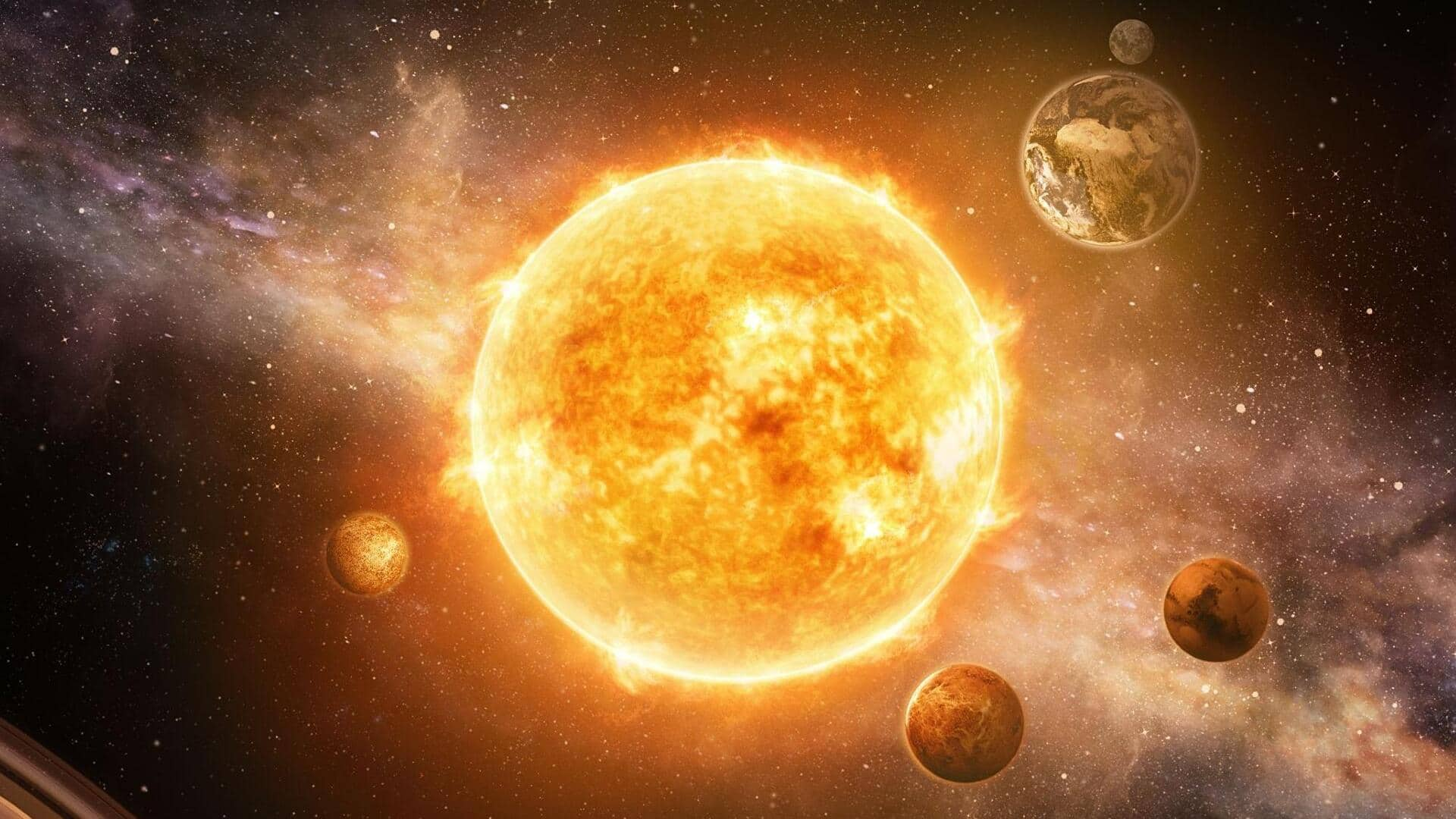
Astronomers witness a solar system being born for first time
What's the story
In a groundbreaking discovery, astronomers have witnessed the formation of a new planetary system around a young star, HOPS-315. The star is located 1,300 light-years away in the Orion Nebula and is similar to our Sun in its early years. The observation sheds light on how planets are formed and offers insights into the origins of our own solar system.
Planetary nursery
How do planets form around young stars?
Young stars like HOPS-315 are surrounded by massive rings of gas and dust known as protoplanetary disks. These disks are where planets begin to form. Crystalline minerals containing silicon monoxide can come together in these swirling disks, eventually forming kilometer-sized "planetesimals." Over time, these planetesimals grow into full-fledged planets, marking the beginning of a new solar system's evolution.
Cosmic mirror
HOPS-315 is an 'orange dwarf' star
HOPS-315, an orange dwarf with just 60% of the Sun's mass, is still growing and may eventually reach a similar size to our Sun. Its similarities with our own star make it a potential key to understanding the early years of our solar system. "We're seeing a system that looks like what our Solar System looked like when it was just beginning to form," said physicist Merel van 't Hoff from Purdue University in the US.
Technological breakthrough
Discovery made using JWST and ALMA telescopes
The discovery of HOPS-315's protoplanetary disk was made using two of the most advanced telescopes ever built: the James Webb Space Telescope (JWST) and Atacama Large Millimeter/submillimeter Array (ALMA). The team, led by astronomer Melissa McClure from Leiden University in the Netherlands, found tiny concentrations of hot minerals in the infrared flow of dust and debris left over from HOPS-315's formation.
Unprecedented finding
New planet found 2.2 AU from its star
The signature of the new planet was found at a distance of some 2.2 astronomical units (AU) from its host star, much like our own asteroid belt. Edwin Bergin, an astrophysicist at the University of Michigan in the US, said, "This process has never been seen before in a protoplanetary disk - or anywhere outside our Solar System." The research has been published in Nature journal.